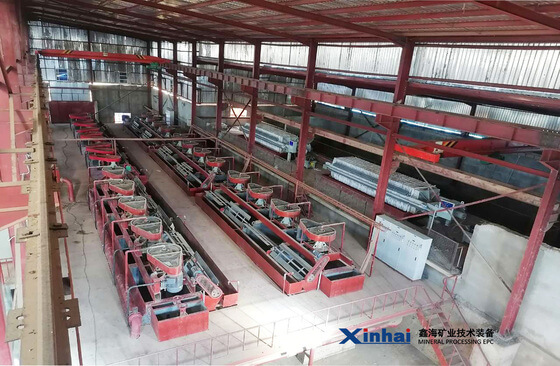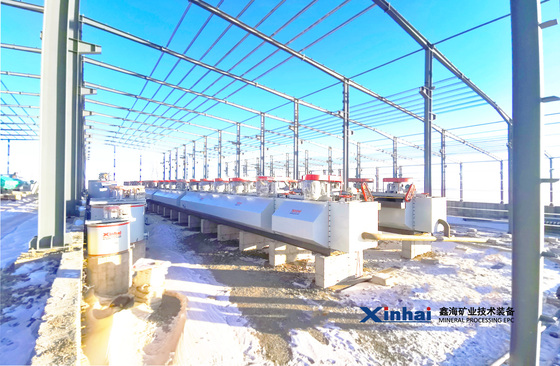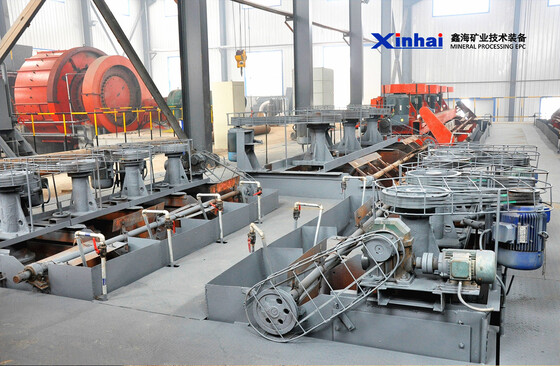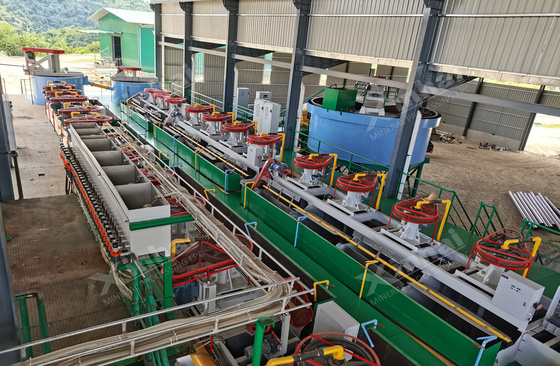In antimony-bearing gold ores, the main target minerals include stibnite, native gold, pyrite, and arsenopyrite. Pyrite and arsenopyrite are the primary gold-bearing minerals, while some stibnites also contain gold, and arsenopyrite and pyrite contain arsenic. Because the gold in antimony-bearing gold ores is finely embedded and the stibnite consumes cyanide and oxygen, flotation is often used for recovery. In production, in addition to the recovery of coarse native gold using gravity separation, the beneficiation of this type of gold ore focuses on the flotation separation of stibnite from pyrite, arsenopyrite, and other minerals, often employing preferential flotation and mixed-preferential flotation. Depending on the specific reagents used, flotation methods for antimony-bearing gold ores can be further divided into sodium hydroxide, sodium sulfide-sodium hydroxide or sodium carbonate, oxidant, and butyl ammonium black powder.
.jpg)
1. Sodium Hydroxide Method
Sodium hydroxide is added to a ball mill and ground in a strongly alkaline slurry to suppress stibnite. Copper sulfate is then used to activate pyrite and arsenopyrite. The slurry pH is then adjusted to 8-9. Collectors and frothers are added to preferentially float out pyrite and arsenopyrite, yielding a gold concentrate. Lead or copper salts are then added to the tailings to activate stibnite. Collectors and frothers are then added for flotation separation to yield an antimony concentrate.

2. Sodium Sulfide-Sodium Hydroxide or Sodium Carbonate Method
Sodium hydroxide and sodium carbonate are added during the grinding process. Lead acetate, copper sulfate, butyl xanthate, and sulfuric acid are then added sequentially to produce an antimony-gold concentrate and waste tailings through mixed flotation. The antimony-gold concentrate is then fed to the regrinding process, where sodium hydroxide, butyl xanthate, and copper sulfate are added during the grinding process. Aeration is then applied, followed by flotation separation to produce a gold concentrate. The product in the flotation cell is the antimony concentrate. Subsequently, the gold concentrate is refined using the sodium sulfide-sodium hydroxide method to suppress stibnite, ultimately yielding a gold concentrate and a low-grade antimony concentrate.

3. Oxidant Method
Before flotation separation of the mixed concentrate, an oxidizing agent, bleaching powder (CaOCl₂) or potassium permanganate (KMnO₄), is added. The slurry is maintained at a solid-to-liquid ratio of 1:3 and stirred for 1 minute. Then, 100g/t of lead acetate is added. Xanthate is used as a collector to float the stibnite. You will get gold-bearing pyrite concentrate tailings.

4. Butyl ammonium black powder method
Antimony and gold flotation separation utilizes butyl ammonium black powder's strong capture ability and good selectivity for stibnite, while its weak capture ability for arsenopyrite and pyrite. First, in the grinding and classification circuit, coarse, naturally occurring particles are immediately separated using a gold trap or gravity separation method. Then, a preferential flotation process is employed, using lead salts as an activator for stibnite, sulfuric acid to adjust the pH of the slurry, butyl ammonium black powder as a collector, and pine oil as a frother. Stibnite is flotated from a slurry at a natural pH or slightly acidic pH to produce an antimony concentrate. The flotation tailings are a coarse concentrate containing gold and arsenopyrite (pyrite) (due to the weak capture ability of butyl ammonium black powder for arsenopyrite). This tailings is then treated with butyl xanthate and, if necessary, copper sulfate for activation. A frother is then added to float the gold-containing arsenopyrite concentrate, from which gold is extracted. The gold in the antimony concentrate can be comprehensively recovered during the smelting process.

Antimony-bearing gold ores are difficult to recover due, in part, to the coating of gold by antimony minerals and, in the other part, to the cyanide and oxygen consumption of stibnite during leaching. Conventional direct cyanide leaching methods cannot achieve high beneficiation performance. In practice, flotation is often used to process ores where antimony minerals are not carrier minerals for gold. It essentially involves the flotation separation of antimony minerals from gold-bearing minerals such as sulfur and arsenic, avoiding complex pretreatment steps while also producing an antimony concentrate byproduct. This method is relatively cost-effective, but while maintaining the flotation performance of the antimony concentrate, it is important to minimize gold carryover.



.jpg)




 zz540045886@gmail.com
zz540045886@gmail.com Chat
Chat



